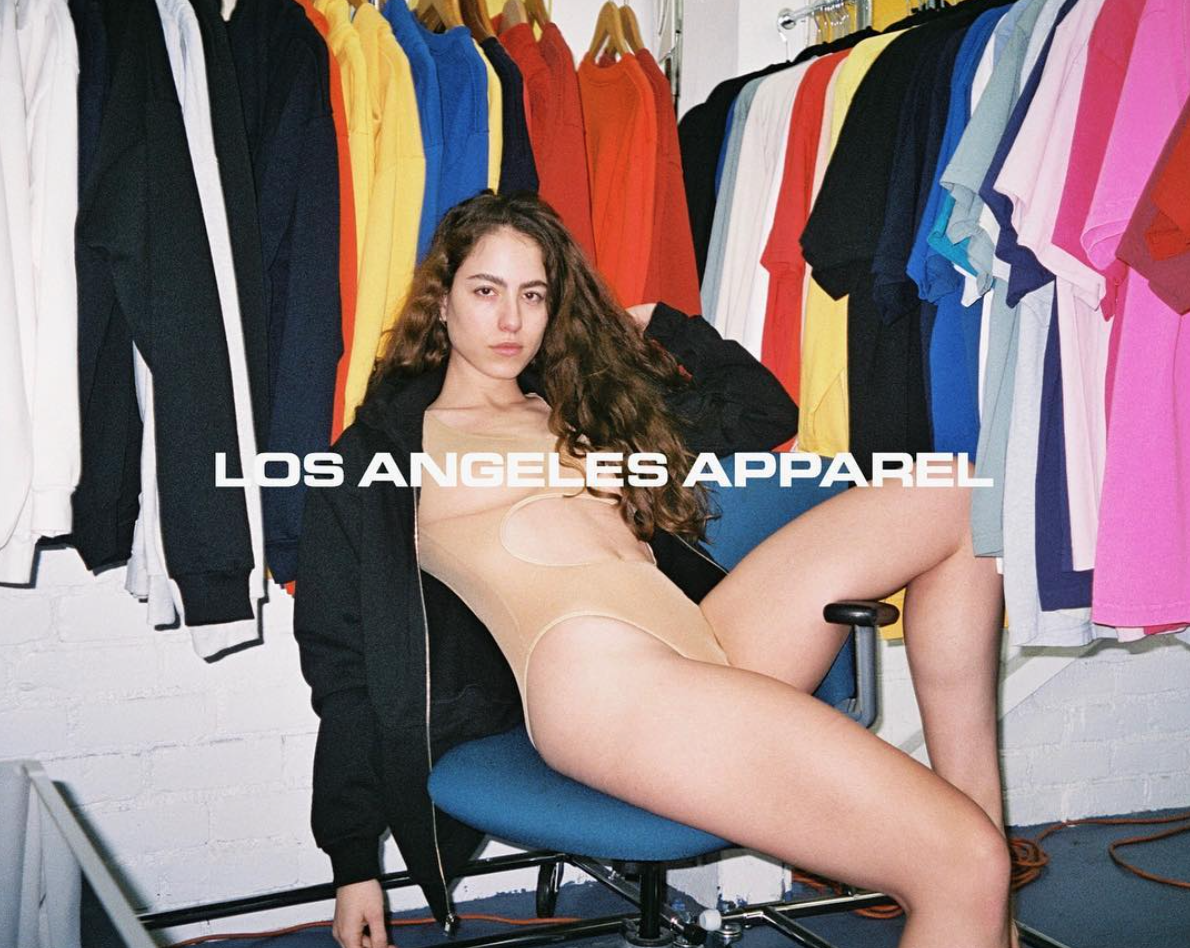
image: Los Angeles Apparel
“I have a vision,” Dov Charney said last year. “My business model works.” The ousted founder of American Apparel was referring to his latest endeavor. With American Apparel fully out of his control and a $10 million investment in hand to launch a new venture, Charney – an inherently controversial figure, who developed a reputation that has been likened loosely to that of photographer Terry Richardson and a handful of ugly sexual harassment lawsuits to go with it – is starting anew (or at least trying to).
Charney’s new business is already underway. As noted by Bloomberg earlier this week, Dov Charney’s warehouse for his new company – called Los Angeles Apparel – “sits on a desolate street in South Central Los Angeles, about four miles south of American Apparel’s former downtown headquarters.”
Now that American Apparel has been bought up by Canadian manufacturing giant Gildan and is swiftly moving manufacturing out of Los Angeles – there is arguably a void for Charney and Los Angeles Apparel to fill. “Los Angeles Apparel can fill bulk orders faster than overseas competitors while delivering American-made goods that have cachet with customers,” per Charney. And according to Bloomberg, the transition thus far has been pretty darn easy for Charney, as many old American Apparel wholesale customers are willing to give him a second chance.
But what about everything else? While only time will tell as to whether Charney will be able to stay out his own way long enough to build another successful brand, there is at least one noteworthy legal issue at the forefront that is worthy of discussion: The brand’s name.
What’s In A Name?
The name is an interesting one, given its somewhat minimal but still pointed similarity to the moniker of Charney’s first venture, American Apparel. This time around, the name is especially interesting, as it will almost certainly present some significant battles when Charney applies for federal trademark rights (he has not yet done so). Why? Well, because the “Los Angeles Apparel Company” mark is descriptive, that is why.
For the uninitiated, trademarks can have varying levels of distinctiveness (or “strength” in plain English) and as a result, will each receive a different treatment in terms of legal protection.
Descriptive marks, for instance, describe the products with which they are associated. As such, a descriptive mark is only protectable when it has gained secondary meaning amongst consumers, meaning that consumers recognize and associate the mark with the brand’s goods.
A prime example of a descriptive mark: Los Angeles Apparel Company – a brand name that refers to an apparel company that is either based in Los Angeles or whose products are manufactured in Los Angeles. See the potential problem here?
This is not necessarily a death knell for Charney, though. Even if a mark is merely descriptive, it may still be protectable if the brand owner can show that his mark has acquired distinctiveness through consumer recognition. A brand may show that its mark has acquired distinctiveness by presenting evidence of the length, manner and exclusivity of the trademark’s use; advertising expenditures; sales numbers; market share; and customer surveys.
Given that Charney’s new company name has a very specific geographic element to it, which is what makes it descriptive in the first place – additional considerations come into play. In fact, there are some very specific rules that govern geographic marks.
For instance, according to the Lanham Act (the federal statute that governs trademark law in the U.S.), no trademark will be registered if it “[c]onsists of a mark which … when used on or in connection with the goods of the applicant is primarily geographically descriptive of them.” Marks that are primarily geographically descriptive may only be registered upon a showing of a secondary meaning.
So, what is a geographically descriptive mark? The U.S. Trademark Trial and Appeal Board (a body within the U.S. Patent and Trademark Office responsible for hearing and deciding certain kinds of trademark cases, including appeals) created a three-part test for determining whether or not a mark is “primarily geographically descriptive.” The mark will fall into that category if:
(1) The primary significance of the mark is a generally known geographic location;
(2) The goods or services originate in the place identified in the mark, and
(3) Purchasers would be likely to believe that the goods or services originate in the geographic place identified in the mark.
As you can likely tell, Charney’s Los Angeles Apparel Company fits quite neatly within this framework, and therefore, without a showing of secondary meaning (which will likely be difficult to establish as this point because the company is still pretty new), will not be subject to registration.
While the Los Angeles Apparel Company mark will certainly be deemed to be descriptive, there is some good news for Charney: He has faced similar trademark issues in the past, and come out on top.
The “American Apparel” trademark was initially deemed by the USPTO to be descriptive. At first, that trademark application for registration was rejected for being geographically descriptive but was eventually approved after Charney could show that the term had acquired a distinctive meaning (aka secondary meaning), helped, I’m sure, by the company’s wildly provocative and much-talked about ad campaigns.
In order to achieve federal-level trademark protections for his new brand, Charney will have to find a way to get consumers to connect Los Angeles Apparel Company goods with the brand itself, which is, of course, no easy feat.







